- You are here:
- Home »
- Indoor Plants
- » Satin Pothos Care Guide
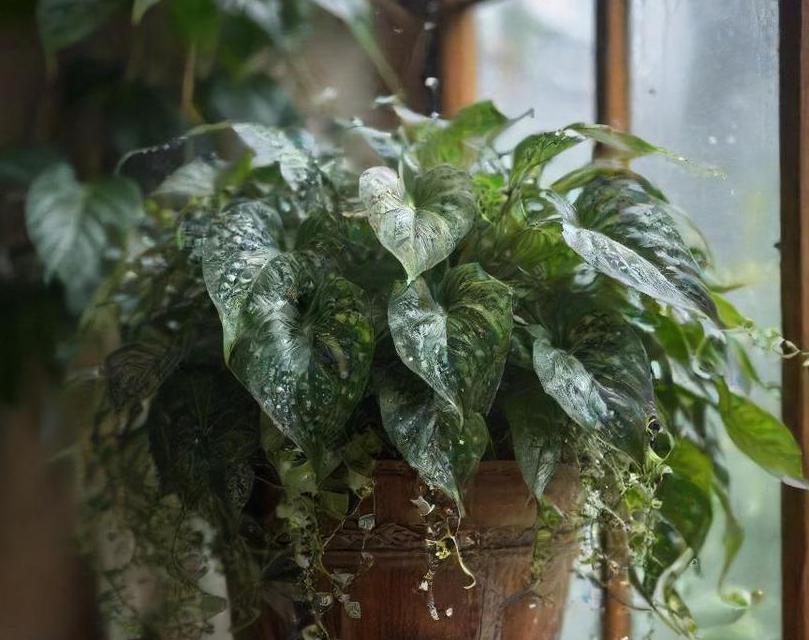
Satin Pothos Care Guide
Indoor plants have become an integral part of interior decoration, offering aesthetic appeal and numerous health benefits. Among the plethora of choices available, Satin Pothos stands out for its striking foliage and low-maintenance nature. In this comprehensive guide, we delve into the intricacies of Satin Pothos, exploring its botanical characteristics, historical significance, common varieties, and more.
Contents
- 1 What Is Satin Pothos?
- 2 Botanical Characteristics
- 3 Historical And Cultural Significance
- 4 Common Names And Varieties
- 5 Light Requirements
- 6 Soil Requirements
- 7 Temperature Requirements
- 8 Humidity Requirements
- 9 Watering Needs For Satin Pothos
- 10 Fertilization
- 11 How To Plant Satin Pothos
- 12 Potting
- 13 Pruning Techniques For Satin Pothos
- 14 Propagation Methods For Satin Pothos
- 15 Troubleshooting Problems With Planting Satin Pothos Indoors
- 16 Conclusion
- 17 FAQS
What Is Satin Pothos?
Satin Pothos, scientifically known as Scindapsus pictus, is a species of flowering plant in the family Araceae. Native to Southeast Asia, particularly in regions like Thailand, Malaysia, and Indonesia, Satin Pothos has gained popularity worldwide as an indoor ornamental plant. Despite its name, Satin Pothos is not a true pothos (Epipremnum genus) but is often referred to as such due to its similar appearance and growth habits.
This evergreen vine is renowned for its lush, heart-shaped leaves adorned with silvery-green variegation. Its trailing stems make it an ideal choice for hanging baskets or as a trailing plant on shelves and countertops. Satin Pothos is prized for its air-purifying qualities, making it a valuable addition to indoor spaces, including homes, offices, and public areas.
Botanical Characteristics
Leaves
The defining feature of Satin Pothos is its foliage, characterized by glossy, heart-shaped leaves with distinctive silver-gray markings. These markings vary in intensity, adding depth and dimension to the plant’s overall appearance. The leaves typically measure 2 to 4 inches in length and are arranged alternately along the stems. Satin Pothos leaves have a velvety texture, further enhancing their visual appeal.
Stems
Satin Pothos exhibits a vining growth habit, with slender, wiry stems that trail gracefully as the plant matures. The stems are capable of climbing if provided with appropriate support, making them versatile in various indoor settings. As the plant grows, it produces aerial roots along the stems, enabling it to anchor itself and absorb nutrients from its surroundings.
Flowers
While Satin Pothos is primarily grown for its foliage, it does produce small, inconspicuous flowers under the right conditions. These flowers are typically pale green or cream-colored and emerge on spadixes enclosed within a spathe. However, flowering is relatively rare in indoor settings and is more commonly observed in its natural habitat.
Growth Habit
Satin Pothos is a relatively fast-growing plant, especially under optimal conditions. It thrives in warm, humid environments with bright, indirect sunlight. However, it can tolerate lower light levels, making it suitable for indoor spaces with limited natural light. With proper care, Satin Pothos can reach lengths of several feet, creating an impressive display of cascading foliage.
Toxicity
Like many members of the Araceae family, Satin Pothos contains calcium oxalate crystals, which can cause irritation and discomfort if ingested. It is important to keep the plant out of reach of children and pets and to wash hands thoroughly after handling to avoid any potential adverse reactions.
Historical And Cultural Significance

Satin Pothos has a rich history intertwined with various cultures and traditions, particularly in its native range of Southeast Asia. In traditional medicine, certain parts of the plant are believed to possess medicinal properties and have been used to treat ailments ranging from skin conditions to respiratory problems.
In addition to its medicinal uses, Satin Pothos holds cultural significance in several indigenous communities. In Thailand, for example, it is considered a symbol of good fortune and prosperity, often incorporated into rituals and ceremonies to invoke blessings and ward off evil spirits.
Furthermore, Satin Pothos has found its way into folklore and superstitions, with some cultures associating it with luck, abundance, and protection. Its lush foliage and resilient nature make it a favored choice for gifting on special occasions, symbolizing growth, renewal, and well-being.
In modern times, Satin Pothos continues to captivate plant enthusiasts worldwide, earning a reputation as a must-have houseplant for both its aesthetic appeal and air-purifying qualities.
Common Names And Varieties
Common Names
Satin Pothos is known by various common names across different regions and cultures. Some of the most widely used names include:
- Satin Pothos
- Silk Pothos
- Silver Vine
- Silver Philodendron
- Silk Philodendron
These names often reflect the plant’s distinctive foliage and luxurious appearance, highlighting its allure as an ornamental plant.
Varieties
While Satin Pothos is primarily recognized for its classic silver-green foliage, several cultivars and varieties offer unique leaf patterns and colorations, adding diversity to this beloved plant species. Some popular varieties include:
-
Scindapsus pictus ‘Exotica’: This cultivar features larger leaves with more pronounced silver variegation, creating a dramatic contrast against the deep green background.
-
Scindapsus pictus ‘Argyraeus’: Also known as Silver Satin Pothos, this variety displays silvery markings that extend across the entire leaf surface, giving it a shimmering, metallic appearance.
-
Scindapsus pictus ‘Silvery Ann’: Characterized by compact growth and abundant silver speckling on the leaves, ‘Silvery Ann’ is a charming miniature variety ideal for small spaces or terrariums.
Each variety offers its own unique charm and appeal, allowing plant enthusiasts to experiment with different combinations and arrangements to create stunning indoor displays.
Satin Pothos, with its captivating foliage and easy-care nature, has emerged as a favorite among indoor plant enthusiasts worldwide. From its botanical characteristics to its historical significance and common varieties, this versatile plant continues to enchant and inspire with its beauty and resilience. Whether adorning a living room shelf or brightening up a dull office corner, Satin Pothos adds a touch of elegance and vitality to any indoor space, making it a timeless choice for plant lovers of all levels.
Light Requirements
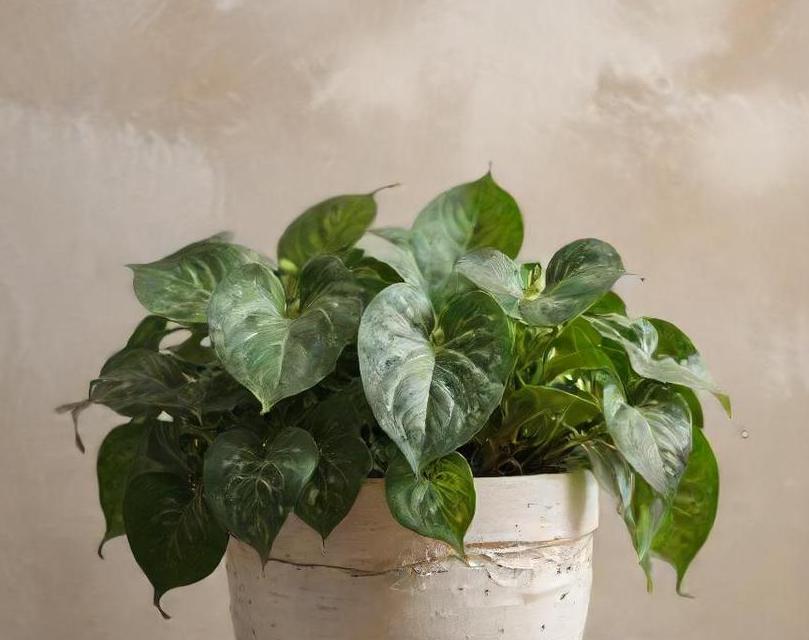
Satin Pothos, scientifically known as Scindapsus pictus, is a popular indoor plant admired for its attractive foliage and ease of care. Belonging to the Araceae family, this plant is native to Southeast Asia and is commonly found in countries like Indonesia, Thailand, and Malaysia. With its heart-shaped leaves and silvery variegation, Satin Pothos adds a touch of elegance to any indoor space, making it a favorite among plant enthusiasts and interior decorators alike.
Like many other houseplants, Satin Pothos thrives in bright, indirect light. While it can tolerate lower light conditions, it may not exhibit its characteristic vibrant foliage in such environments. Therefore, placing it near a window where it can receive filtered sunlight or in a well-lit room without direct exposure to the sun is ideal.
Direct sunlight can scorch the delicate leaves of Satin Pothos, leading to leaf burn and loss of variegation. On the other hand, insufficient light may result in leggy growth and faded foliage. Therefore, striking the right balance is crucial for maintaining the plant’s health and appearance.
If natural light is limited in your living space, you can supplement it with artificial lighting. LED grow lights or fluorescent bulbs designed for plants can provide the necessary light spectrum for Satin Pothos to thrive. Position the lights above the plant and adjust the duration of illumination according to its needs, typically around 10 to 12 hours per day.
Regularly rotate the plant to ensure even exposure to light on all sides, preventing it from leaning or growing unevenly towards the light source. By meeting its light requirements, you’ll encourage robust growth and vibrant foliage in your Satin Pothos.
Soil Requirements
Proper soil composition is essential for the health and growth of Satin Pothos. This plant prefers well-draining, aerated soil that retains some moisture without becoming waterlogged. A suitable potting mix for Satin Pothos consists of a combination of peat moss, perlite, and coarse sand or bark to ensure adequate drainage.
Commercial potting mixes labeled for indoor plants or tropical foliage are generally suitable for Satin Pothos. Alternatively, you can create your own mix by combining equal parts of peat moss, perlite, and either coarse sand or orchid bark. This blend provides the necessary balance of water retention and drainage for optimal root health.
When repotting Satin Pothos, choose a container with drainage holes to prevent water from accumulating at the bottom, which can lead to root rot. Ensure that the pot is slightly larger than the plant’s root ball to allow room for growth but not excessively large, as this can lead to overwatering and soil compaction.
During the growing season, which typically spans spring and summer, fertilize Satin Pothos every four to six weeks with a balanced liquid fertilizer diluted to half strength. Reduce or cease fertilization during the plant’s dormant period in fall and winter to prevent nutrient buildup in the soil.
Temperature Requirements
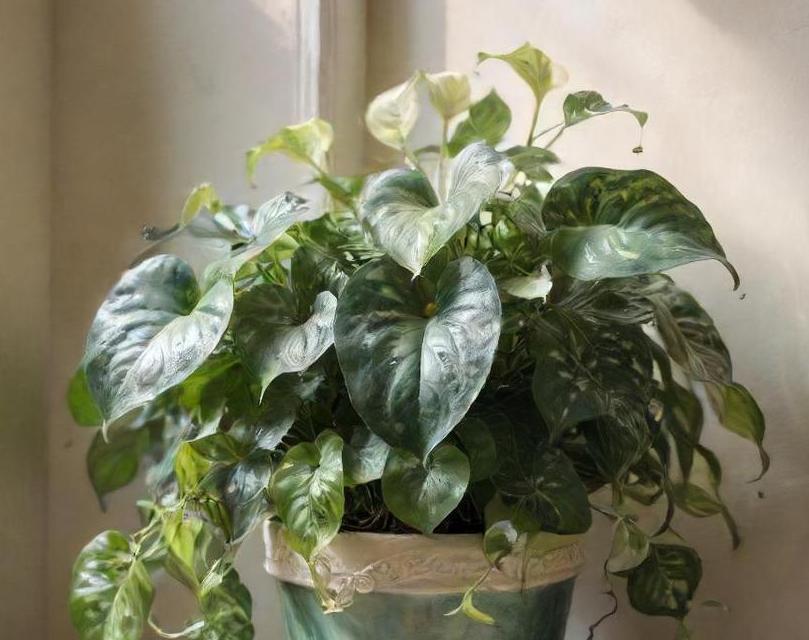
Satin Pothos thrives in moderate to warm temperatures, mimicking its natural habitat in tropical regions. Ideally, maintain indoor temperatures between 65°F and 85°F (18°C to 29°C) year-round to ensure the plant’s optimal growth and health.
Avoid exposing Satin Pothos to sudden temperature fluctuations or drafts, as they can stress the plant and make it more susceptible to pests and diseases. Locate the plant away from doors, windows, air conditioning vents, and heating sources to provide a stable and comfortable environment.
During winter, when indoor heating systems may lead to drier air, consider increasing humidity levels around Satin Pothos to prevent leaf desiccation and browning. You can achieve this by placing a humidifier nearby or grouping plants together to create a microclimate with higher humidity.
If natural humidity is insufficient, mist the foliage of Satin Pothos occasionally with room-temperature water to increase moisture levels around the plant. However, avoid excessive misting, as it can promote fungal diseases and leaf spotting if the foliage remains wet for prolonged periods.
Humidity Requirements
As a tropical plant, Satin Pothos thrives in high humidity environments similar to its native habitat. While it can tolerate lower humidity levels, providing adequate moisture in the air enhances its growth and foliage quality.
Indoor humidity levels typically range between 40% and 60%, which may not be sufficient to meet the needs of Satin Pothos, especially in dry climates or heated indoor environments. To increase humidity around the plant, consider the following methods:
-
Humidifiers: Invest in a room humidifier to maintain consistent humidity levels, especially during winter when indoor heating systems can dry out the air.
-
Pebble Tray: Place a shallow tray filled with water and pebbles beneath the plant’s pot. As the water evaporates, it increases humidity around the plant without saturating the soil.
-
Grouping Plants: Cluster multiple plants together to create a microclimate with higher humidity levels. As plants release moisture through transpiration, they collectively increase humidity in their immediate vicinity.
-
Misting: Occasionally mist the foliage of Satin Pothos with room-temperature water using a spray bottle. Ensure that the mist settles on the leaves without dripping excessively onto the soil.
By incorporating these strategies, you can create an optimal environment with higher humidity levels to promote lush growth and vibrant foliage in your Satin Pothos.
Satin Pothos is a versatile and visually appealing indoor plant that adds a touch of elegance to any living space. With its heart-shaped leaves adorned with silvery variegation, this plant is not only aesthetically pleasing but also relatively easy to care for, making it suitable for both novice and experienced plant enthusiasts. To ensure the optimal growth and health of Satin Pothos, it's essential to meet its specific requirements regarding light, soil, temperature, and humidity. Providing bright, indirect light, well-draining soil, moderate temperatures, and adequate humidity levels mimicking its tropical habitat will encourage robust growth and vibrant foliage. By following the guidelines outlined in this comprehensive guide, you can cultivate a thriving Satin Pothos that serves as a beautiful centerpiece or decorative accent in your indoor environment. With proper care and attention, your Satin Pothos will continue to delight you with its lush foliage and enduring beauty for years to come.
Watering Needs For Satin Pothos
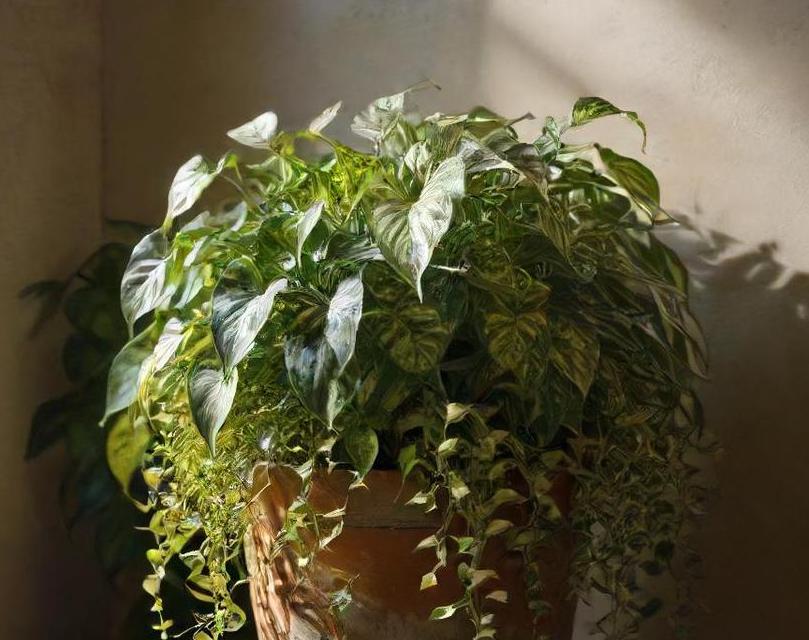
Satin Pothos, scientifically known as Scindapsus pictus, is a stunning vine that adds elegance and charm to any indoor space. Originating from Southeast Asia, this tropical plant is a popular choice among indoor gardeners due to its striking foliage and low maintenance requirements. With its heart-shaped leaves adorned with silvery markings, the Satin Pothos is not only visually appealing but also easy to care for, making it an excellent choice for both beginner and experienced plant enthusiasts.
Proper watering is essential for the health and vitality of Satin Pothos. Like many tropical plants, Satin Pothos prefers consistently moist soil but is susceptible to root rot if overwatered. Therefore, it’s crucial to strike the right balance when watering your Satin Pothos.
Determining Watering Frequency
The frequency of watering your Satin Pothos largely depends on factors such as environmental conditions, pot size, and soil type. As a general rule of thumb, it’s best to allow the top inch of soil to dry out between waterings. Inserting your finger into the soil can help gauge its moisture level. If the top inch feels dry to the touch, it’s time to water your plant.
Watering Technique
When watering your Satin Pothos, it’s important to water the soil directly at the base of the plant rather than overhead. Overhead watering can lead to fungal diseases and may cause the delicate foliage to rot. Use room temperature water and pour it slowly around the base of the plant until excess water begins to drain from the bottom of the pot.
Avoiding Overwatering
Overwatering is one of the most common mistakes made when caring for Satin Pothos. To prevent overwatering, ensure that your plant is potted in a well-draining soil mix and that the pot has drainage holes at the bottom. Additionally, empty the saucer beneath the pot after watering to prevent water from pooling around the roots.
Fertilization
While Satin Pothos is relatively low-maintenance, occasional fertilization can help promote healthy growth and vibrant foliage. However, it’s important not to over-fertilize, as this can result in fertilizer burn and other nutrient imbalances.
Choosing The Right Fertilizer
When selecting a fertilizer for your Satin Pothos, opt for a balanced, water-soluble fertilizer specifically formulated for houseplants. These fertilizers typically contain equal proportions of nitrogen, phosphorus, and potassium, along with essential micronutrients. Avoid using fertilizers high in nitrogen, as this can encourage excessive foliage growth at the expense of root development.
Fertilization Frequency
During the growing season, which typically spans from spring to early fall, fertilize your Satin Pothos every four to six weeks. Dilute the fertilizer to half the recommended strength to avoid overwhelming the plant with nutrients. Cease fertilization during the winter months when growth slows down, resuming in spring as new growth emerges.
Application Method
When applying fertilizer to your Satin Pothos, follow the instructions provided on the fertilizer packaging carefully. Dissolve the fertilizer in water according to the recommended ratio and water the plant as usual. Avoid getting fertilizer on the foliage, as this can cause leaf burn. Always water the plant thoroughly after fertilizing to prevent salt buildup in the soil.
How To Plant Satin Pothos
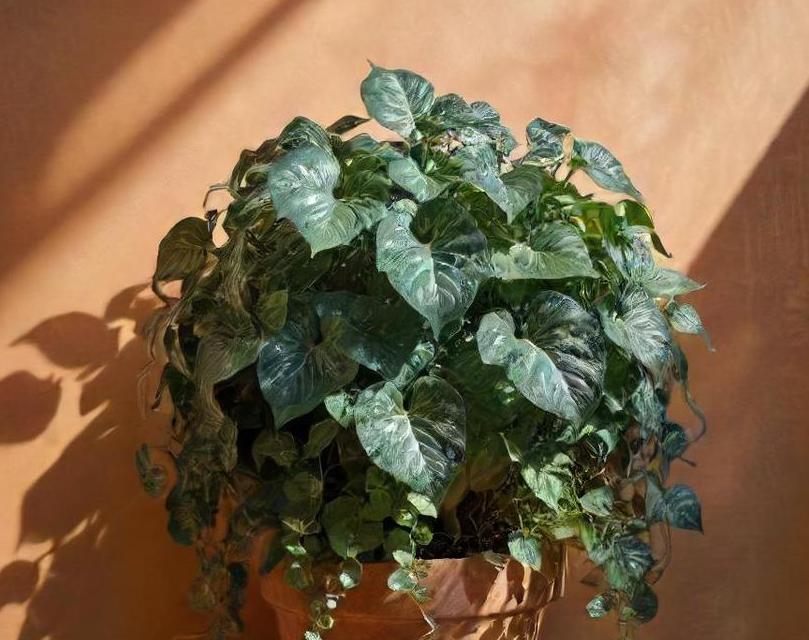
Proper planting techniques are essential for establishing healthy root systems and promoting vigorous growth in Satin Pothos. Whether you’re starting with a cutting or a nursery-bought plant, following these steps will ensure success.
Propagation
Satin Pothos can be propagated easily through stem cuttings, making it an excellent choice for both novice and experienced gardeners. To propagate Satin Pothos:
- Select a healthy stem with several nodes (the points where leaves emerge).
- Using clean, sharp scissors or pruning shears, make a diagonal cut just below a node.
- Remove any leaves from the lower portion of the cutting to expose the nodes.
- Place the cutting in a jar of water, ensuring that at least one node is submerged.
- Place the jar in a warm, brightly lit location, away from direct sunlight.
- Change the water every few days to prevent stagnation and algae growth.
- After a few weeks, roots will begin to develop from the nodes, indicating that the cutting is ready for planting.
Potting
When potting Satin Pothos, it’s essential to choose a container that provides adequate drainage and room for root growth. Follow these steps to pot your Satin Pothos successfully:
- Select a pot with drainage holes at the bottom to prevent waterlogging.
- Fill the bottom of the pot with a layer of well-draining potting mix.
- Gently remove the Satin Pothos from its nursery container, taking care not to damage the roots.
- Place the plant in the center of the pot and add additional potting mix around the roots, pressing lightly to secure the plant in place.
- Water the plant thoroughly, allowing excess water to drain from the bottom of the pot.
- Place the pot in a location with bright, indirect light, avoiding direct sunlight, which can scorch the delicate foliage.
- Monitor the plant closely during the first few weeks to ensure that it adjusts well to its new environment.
Satin Pothos is a stunning addition to any indoor garden, thanks to its striking foliage and low maintenance requirements. By providing the right amount of water, fertilization, and proper planting techniques, you can ensure that your Satin Pothos thrives and flourishes in its new environment. Whether you’re a beginner or experienced gardener, Satin Pothos is sure to bring beauty and elegance to your home or office space. With its cascading vines and silvery leaves, Satin Pothos is truly a sight to behold, adding a touch of tropical charm to any interior setting.
Pruning Techniques For Satin Pothos
Indoor gardening has seen a resurgence in recent years, with enthusiasts discovering the beauty and benefits of cultivating greenery within the confines of their homes. Among the plethora of plant species suitable for indoor environments, Satin Pothos (Scindapsus pictus) stands out as a popular choice. Renowned for its striking foliage and low-maintenance nature, Satin Pothos is a versatile plant that thrives in various indoor conditions.
Pruning is an essential aspect of Satin Pothos care, contributing to its health, aesthetics, and overall vitality. Here are some pruning techniques tailored to ensure optimal growth and appearance of your Satin Pothos:
1. Regular Maintenance Pruning
Regularly inspect your Satin Pothos for any dead, damaged, or yellowing leaves. Using clean, sharp scissors or pruning shears, carefully snip these undesirable foliage close to the stem’s base. Regular maintenance pruning helps maintain the plant’s health by preventing the spread of diseases and redirecting energy to new growth.
2. Shaping And Training
Satin Pothos has a trailing growth habit, making it an excellent candidate for shaping and training. To encourage bushier growth and a more compact appearance, pinch back the growing tips regularly. This prompts the plant to produce lateral shoots, resulting in a fuller, more aesthetically pleasing appearance. Additionally, you can guide the vine along a trellis or support structure to create an attractive cascading effect.
3. Removing Leggy Growth
Over time, Satin Pothos vines may become leggy, with long, bare stems devoid of foliage. To rejuvenate the plant and promote denser growth, trim back these leggy stems to a point just above a leaf node or bud. This encourages the development of new shoots and foliage along the trimmed stem, revitalizing the plant’s appearance.
4. Pruning For Propagation
Pruning also plays a vital role in propagating Satin Pothos through stem cuttings. When selecting stems for propagation, choose healthy, mature vines with at least two to three nodes. Using sterile scissors or a sharp knife, cut the stem just below a node, ensuring the cutting is around 4-6 inches long. Remove any lower leaves to expose the nodes, which will facilitate root development when placed in water or soil.
Propagation Methods For Satin Pothos
Propagation offers enthusiasts the opportunity to expand their Satin Pothos collection or share this captivating plant with friends and family. Here are two common propagation methods for Satin Pothos:
1. Water Propagation
Water propagation is a simple and effective method for rooting Satin Pothos cuttings. Fill a clean glass or jar with water, ensuring it covers the nodes of the cuttings without submerging the entire stem. Place the cuttings in a bright, indirect light location, changing the water every few days to prevent stagnation. Within a few weeks, roots will begin to develop from the nodes, signaling successful propagation. Once the roots are several inches long, transplant the cuttings into a well-draining potting mix to continue their growth.
2. Soil Propagation
Soil propagation is another popular method for propagating Satin Pothos cuttings, offering a seamless transition from cutting to mature plant. Fill a small pot with a well-draining potting mix, such as a blend of peat moss, perlite, and vermiculite. Insert the cuttings into the soil, ensuring at least one node is buried beneath the surface. Water the soil thoroughly and place the pot in a warm, bright location with indirect sunlight. Keep the soil consistently moist, but not waterlogged, to encourage root development. In a few weeks, the cuttings will establish roots and begin to grow, eventually becoming independent plants.
Troubleshooting Problems With Planting Satin Pothos Indoors
While Satin Pothos is relatively resilient, it may encounter issues when grown indoors. Identifying and addressing these problems promptly is crucial to ensure the plant’s health and vigor. Here are some common issues encountered when growing Satin Pothos indoors, along with troubleshooting tips:
1. Yellowing Leaves
Yellowing leaves on Satin Pothos can be indicative of various issues, including overwatering, underwatering, or insufficient light. Assess the plant’s watering regimen and adjust accordingly, ensuring the soil is consistently moist but not waterlogged. Additionally, relocate the plant to a brighter location with indirect sunlight to promote healthy growth and foliage coloration.
2. Pests
Satin Pothos is susceptible to pests such as spider mites, mealybugs, and aphids, especially when grown indoors. Regularly inspect the plant for signs of pest infestation, including webbing, sticky residue, or visible insects. To control pests, gently wipe the foliage with a damp cloth or cotton swab dipped in insecticidal soap. For severe infestations, consider using horticultural oil or neem oil spray to effectively eradicate pests.
3. Root Rot
Overwatering is a common cause of root rot in Satin Pothos, leading to soggy, waterlogged soil and decayed roots. To prevent root rot, ensure proper drainage by using a well-draining potting mix and allowing excess water to drain freely from the pot. Allow the soil to dry slightly between waterings, and avoid leaving the plant sitting in standing water. If root rot is detected, trim away any affected roots and repot the plant in fresh, sterile soil to prevent further spread of the disease.
4. Fungal Diseases
Fungal diseases such as powdery mildew and leaf spot can occur in Satin Pothos, particularly in humid environments with poor air circulation. To prevent fungal diseases, maintain good air circulation around the plant by positioning it near a fan or opening windows periodically. Avoid overhead watering, as splashing water can facilitate the spread of fungal spores. If fungal diseases are detected, treat the plant with a fungicidal spray according to the manufacturer’s instructions to suppress fungal growth and prevent recurrence.
Conclusion
In conclusion, Satin Pothos is a delightful addition to any indoor garden, offering stunning foliage, low-maintenance care, and easy propagation opportunities. By implementing proper pruning techniques, propagation methods, and troubleshooting strategies, enthusiasts can ensure their Satin Pothos thrives and flourishes in indoor environments. Whether adorning a sunny windowsill or cascading gracefully from a hanging basket, Satin Pothos is sure to captivate and delight with its beauty and charm. With a little care and attention, this versatile plant will reward growers with years of lush greenery and natural elegance.
FAQS
What Is A Satin Pothos?
Satin Pothos (Scindapsus pictus) is a popular indoor plant known for its stunning foliage. It belongs to the Araceae family and is native to Southeast Asia. The plant features heart-shaped leaves with a satin-like texture, adorned with silver, gray, or cream variegation, making it a striking addition to any indoor space.
How Do I Care For A Satin Pothos?
Satin Pothos thrives in bright, indirect light but can tolerate low light conditions. It prefers well-draining soil and regular watering, allowing the top inch of soil to dry out between waterings. Avoid overwatering, as it can lead to root rot. Additionally, Satin Pothos benefits from occasional misting to maintain humidity levels, especially in dry indoor environments.
What Are The Ideal Growing Conditions For Satin Pothos?
Satin Pothos prefers temperatures between 65°F to 85°F (18°C to 29°C) and high humidity levels. It grows best in a well-lit area with indirect sunlight, such as near a north or east-facing window. Avoid placing it in direct sunlight, as this can scorch its delicate leaves. Providing adequate airflow around the plant can also prevent issues like fungal diseases.
How Often Should I Fertilize My Satin Pothos?
Fertilize Satin Pothos every 4 to 6 weeks during the growing season (spring and summer) with a balanced, water-soluble fertilizer diluted to half strength. Reduce fertilization frequency during the fall and winter months when the plant’s growth slows down. Over-fertilization can lead to fertilizer burn, so it’s essential to follow the recommended dilution and frequency.
Can I Propagate Satin Pothos?
Yes, Satin Pothos is relatively easy to propagate through stem cuttings. Simply take a cutting with at least two nodes (where leaves attach to the stem), remove any leaves from the lower node, and place the cutting in water or moist soil. Keep the cutting in a warm, bright location, and roots should develop within a few weeks. Once roots are established, transplant the cutting into a pot with well-draining soil.
Are There Any Common Pests Or Diseases That Affect Satin Pothos?
Satin Pothos is generally resistant to pests and diseases, but it can occasionally encounter issues such as spider mites, mealybugs, and aphids. Regularly inspect the plant for signs of pests, such as webbing, sticky residue, or tiny insects on the leaves. To treat infestations, gently wipe the leaves with a damp cloth or use an insecticidal soap following the manufacturer’s instructions.
How Can I Maintain The Variegation Of Satin Pothos Leaves?
To maintain the vibrant variegation of Satin Pothos leaves, ensure the plant receives adequate but indirect light. Variegated varieties may lose their variegation if exposed to too much shade or low light. Regularly clean the leaves with a soft, damp cloth to remove dust, which can hinder photosynthesis. Avoid using leaf shine products, as they can clog leaf pores and interfere with the plant’s ability to breathe.
